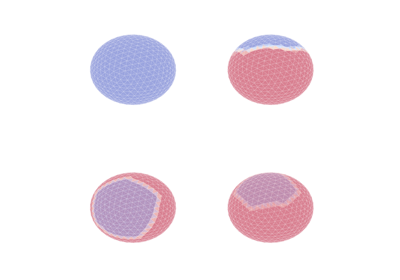PyTorch toolbox to work with spherical surfaces.
Note
This page is a reference documentation. It only explains the class signature, and not how to use it. Please refer to the gallery for the big picture.
- class surfify.augmentation.SurfBlur(sigma, ico_order=None, vertices=None, triangles=None, neighs=None, cachedir=None)[source]¶
Bases:
RandomAugmentationAn icosahedron texture Gaussian blur implementation. It uses the DiNe convolution filter for speed. The receptive field is controlled by sigma, the standard deviation of the kernel.
Init class.
- Parameters:
sigma : float
sigma parameter of the gaussian filter.
ico_order : int, default None
the ico order to work with.
vertices : array (N, 3), default None
icosahedron’s vertices.
triangles : array (M, 3), default None
icosahdron’s triangles.
neighs : dict, default None
optionnaly specify the DiNe neighboors of each vertex as build with sufify.utils.neighbors, ie. a dictionary with vertices row index as keys and a dictionary of neighbors vertices row indexes organized by rings as values.
cachedir : str, default None
the optional path to cache the neighbors function output.
Examples¶
Follow us

